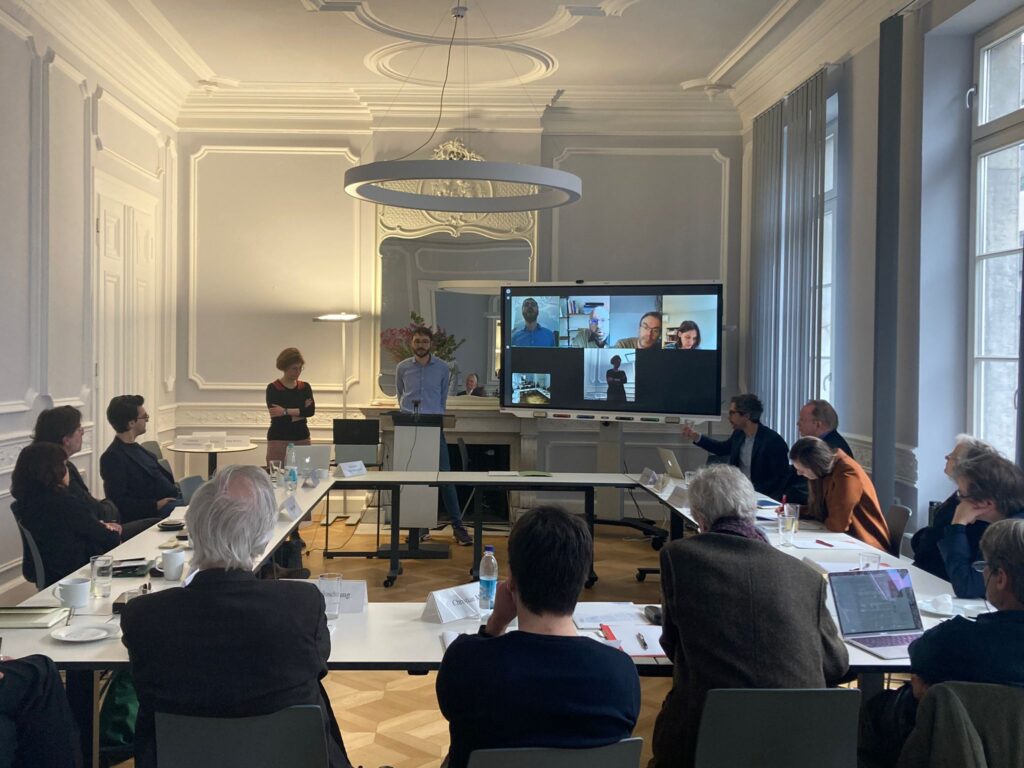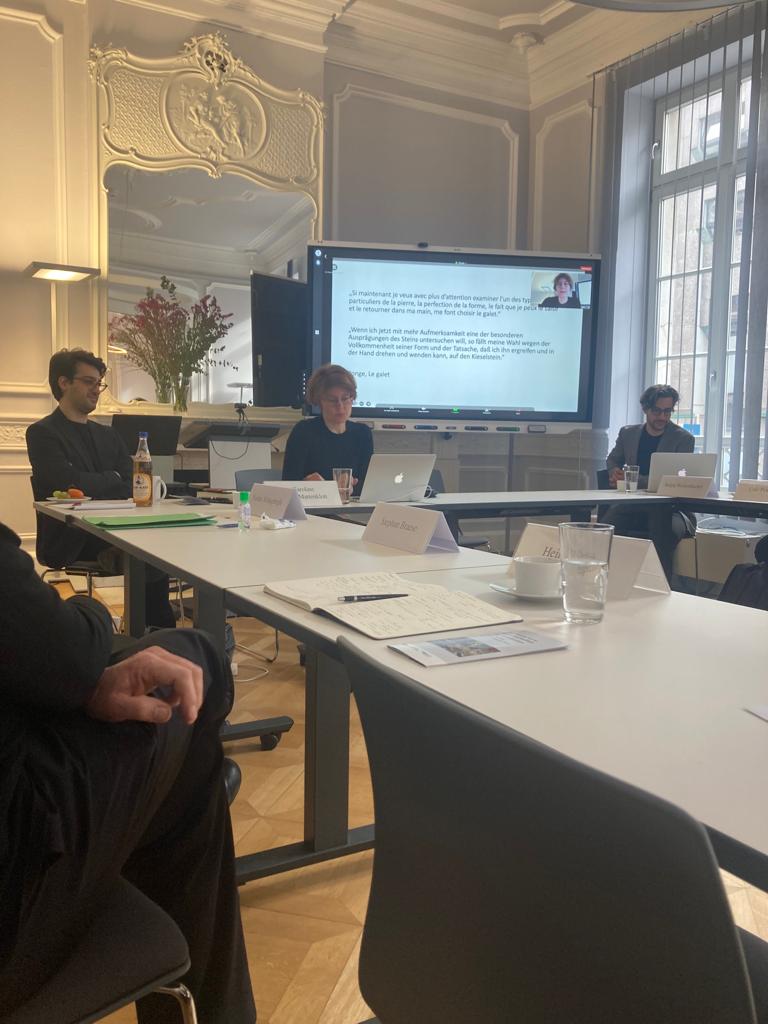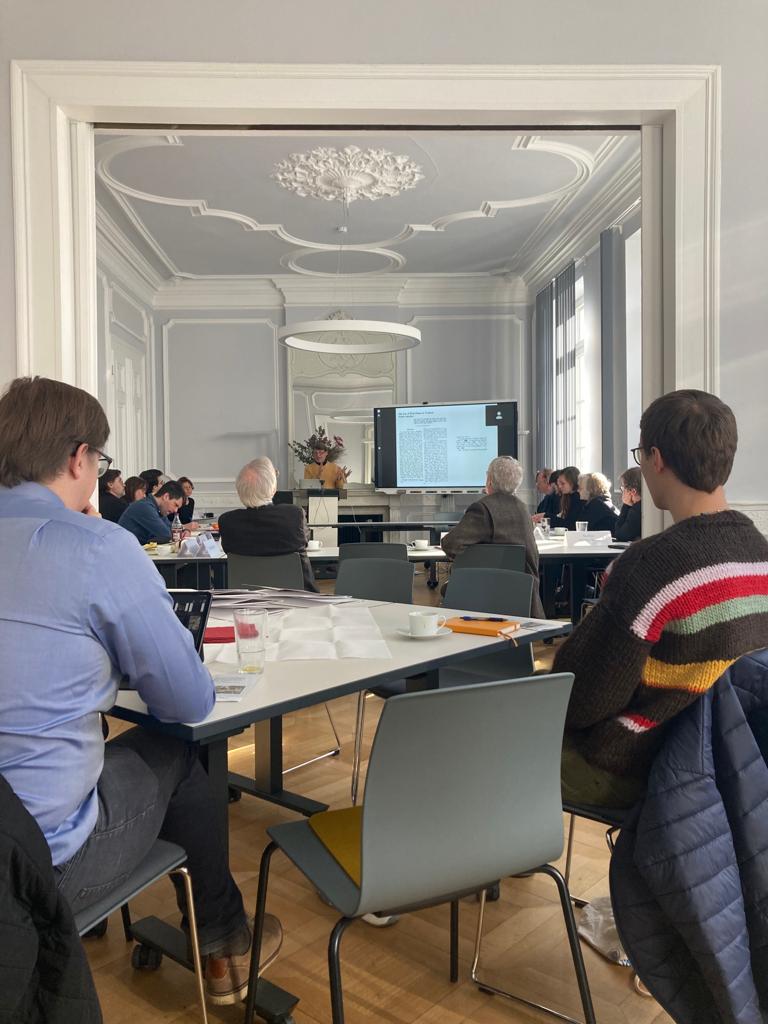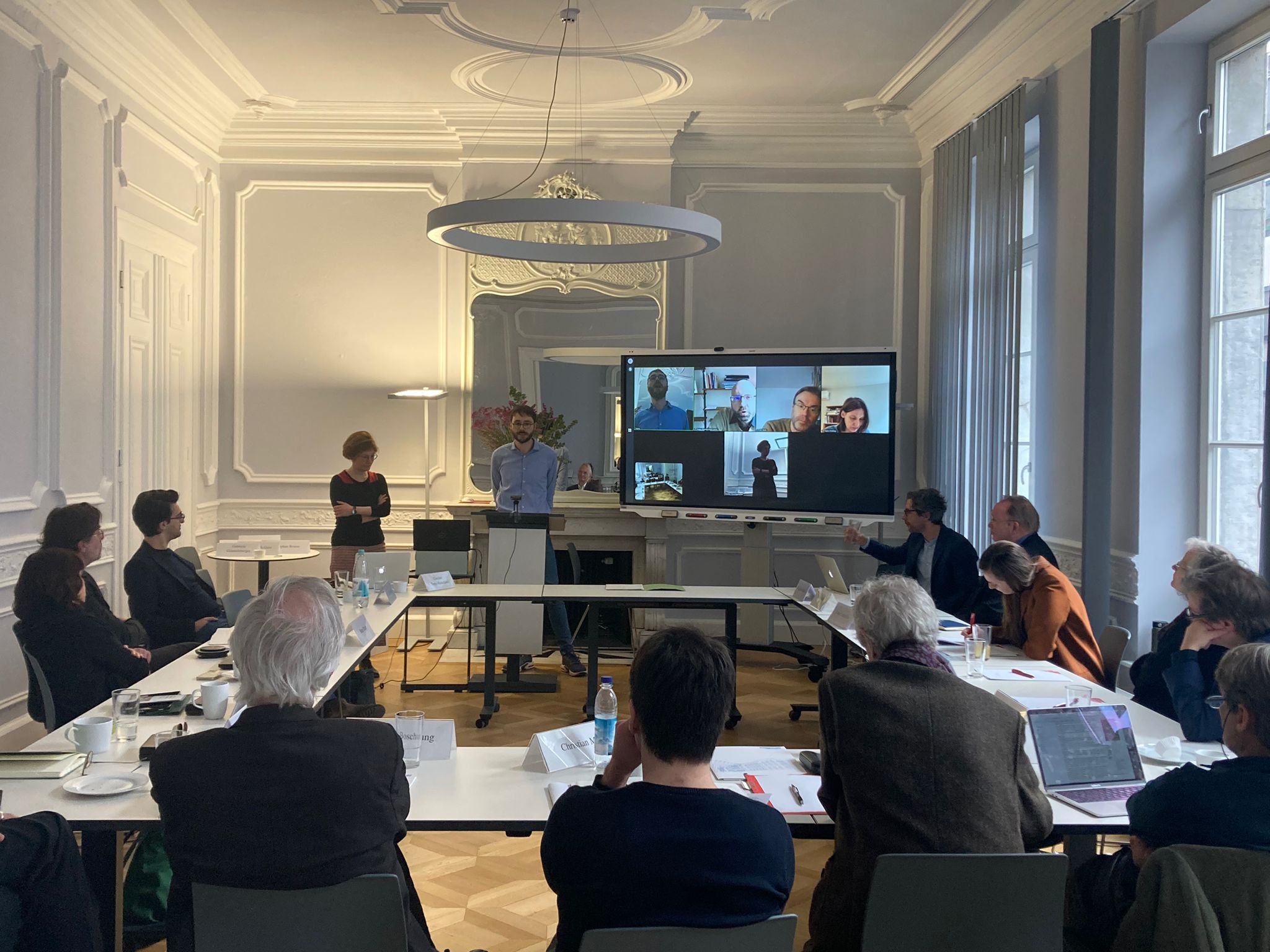How does the relationship between concretion and abstraction manifests? How does focusing on the relationship between abstraction and concretion open up new perspectives on the history of natural sciences and empiricization? What methods are employed in collecting and presenting concrete objects from nature and science, and how are they reflected? What are the opportunities and limits of transferring the concept of ‘epistemic objects’ from the history of knowledge to literary and art studies? Can we identify coevolving styles of writing about the concrete in the sciences and in the arts?

From February 15th to 17th, 2023, the Käte Hamburger Kolleg at RWTH Aachen University hosted the international conference “Wissenschaften des Konkreten”, conceived and organized by Caroline Torra-Mattenklott, Christiane Frey, Yashar Mohagheghi, and Sergej Rickenbacher of the Institut für Germanistische und Allgemeine Literaturwissenschaft at RWTH Aachen University. The concept of the conference is inspired, as its title shows, by Claude Lévi-Strauss’ “sciences of the concrete” (Lévi-Strauss 1997). Lévi-Strauss argues that both the ‘savage mind’ of the nature-based cultures* as well as modern science in industrialized societies emerge from sensual and experimental interaction with surrounding things. Over the three days of the conference, the participants explored the above questions and others from three different perspectives:
The first day of the conference opened with the perspective of “Abstraction and Concretion in the Arts and Sciences”. The speakers from the history of science, archaeology, and literary studies shed light on the interplay between abstraction and concretion in their respective presentations not only from the point of view of different disciplines, but also with a focus on different epochs (Lectures: Staffan Müller-Wille, Dietrich Boschung, Hans-Jörg Rheinberger, Udo Friedrich). On the second day, under the heading “Epistemic Practices between Sciences and Arts”, the emphasis was initially on a sensory perspective, with lectures on “Augenmaß” (sense of proportion), visual acuity and tact (Lectures: Christian Metz, Katja Haustein, Jonas Cantarella, Regine Strätling, Svetlana Chernyshova). Finally, the third day was devoted to “Concrete Details: Objects and Cases between Art and Science”. The presentations addressed rhetorical techniques of concretization as well as the relationship between people and their objects in literature (Lectures: Dirk Werle, Alexander Kling, Dorothee Kimmich).

Over the course of the three days, the conference took place in the charming premises of the Käte Hamburger Kolleg. However, the hybrid format also allowed international speakers and attendees to contribute via Zoom and participate in the inspiring discussions. A stimulating atmosphere of discussion developed allowing a common denominator to emerge despite the different emphases. It was repeatedly shown that the operations of concretion and abstraction seem to be inextricably intertwined. This relationship can be observed equally, for example, in Linné’s taxonomies, biogenetic research, and early modern rhetoric. Various techniques were discussed on the occasion of the lectures that mediate between the concrete and the abstract, including graphic schemata, the sensual-habitual “Augenmaß” and rhetorical procedures. The concrete has proven itself to be multifaceted. Sometimes it manifested itself as the concreteness of scientific working methods or as rhetorical-linguistic detailing or through its reference to objects.
In the lively concluding discussion, it became clear that there were significant similarities in concretization techniques across disciplines and epochs. Abstraction and concretion were understood not only as linear procedures building on each other, but as dialectical processes in which objects, research subjects, and artworks can shift from one state to another. For this reason, a temporality is always inherent in the concrete. Furthermore, the basic sensual-intellectual action with the concrete, which precedes every abstraction, was emphasized once again, which starts in the gesture of lifting and turning the thing and finds its provisional conclusion in the gene sequentialization.

Reference
Lévi-Strauss, Claude: La pensée sauvage. Paris 1962. Dt. Übers: Das wilde Denken. Aus dem Frz. von Hans Naumann. Frankfurt/M. 1997.
*We would like to emphazise that this is Lévi-Strauss’ terminology.
One Comment on “Entanglements of the concrete and the abstract @c:or/e: International Conference “Wissenschaften des Konkreten””
Leave a Reply
You must be logged in to post a comment.




Pingback: c:o/re Highlights of 2023: A look back